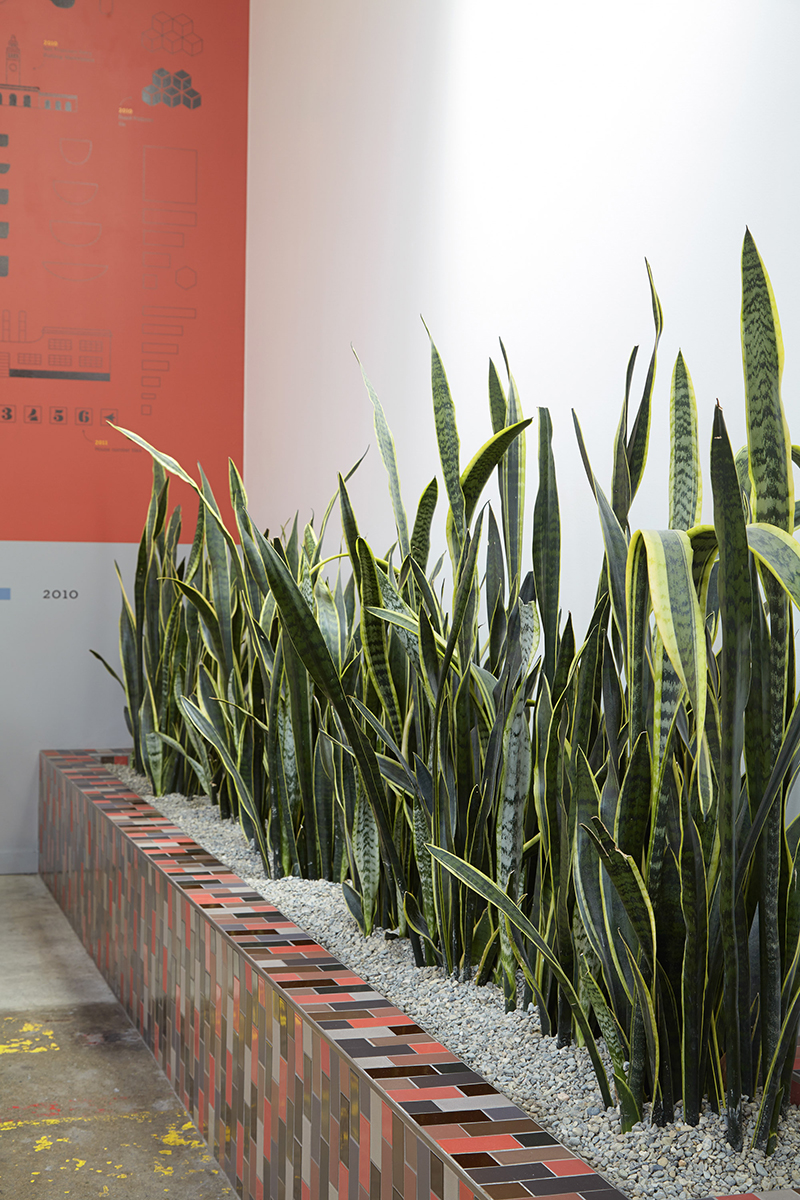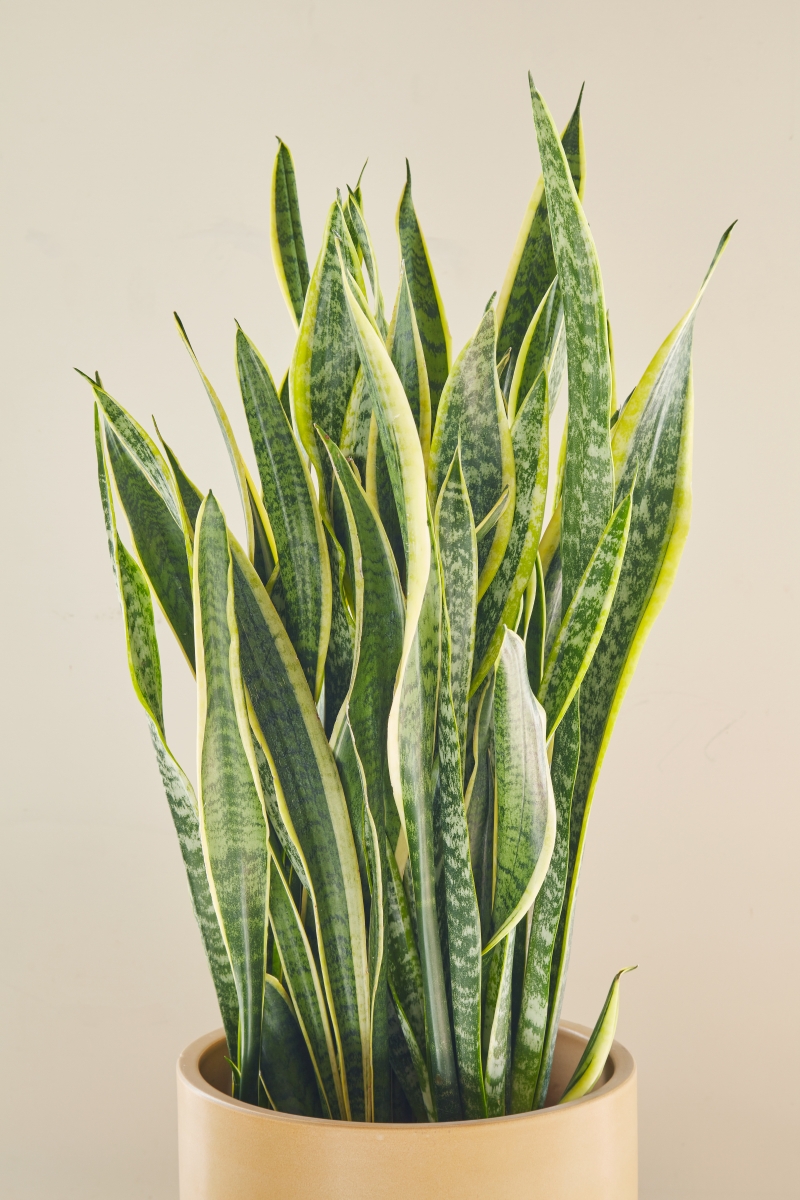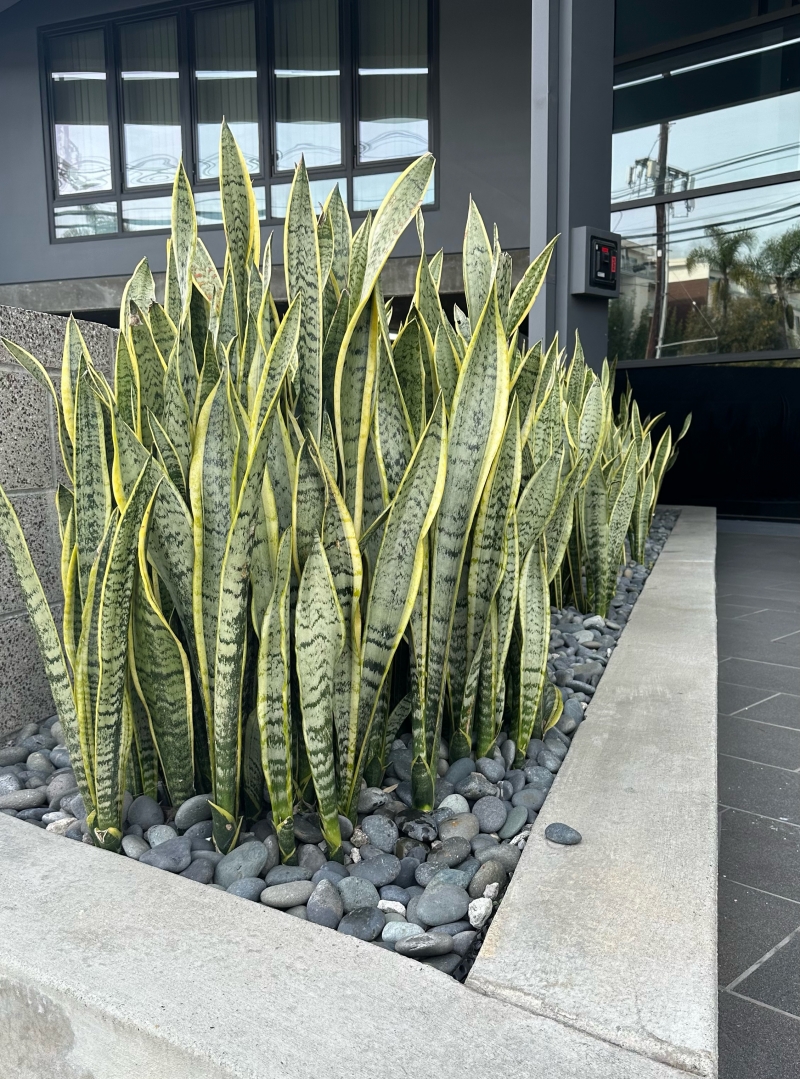




| synonyms | Dracaena trifasciata 'Laurentii' (current name) | |
| height | 2–3ft | |
| width | 1–3ft | |
| tolerates | Pots, Neglect | |
| water needs |
Low | |
| water info |
Sanevieria are some of the toughest plants out there, as long as you let them go dry between waterings. Generally indoors this will mean watering every three to five weeks. We know a grower who swears by watering their Sansevieria “whenever the rent is due.“ | |
| hardy to |
30F | |
| exposure | Deep Shade – Full Shade | |
| indoor outdoor |
Outdoor | |
| drainage | In Ground: Cactus Mix, In Pots: Cactus Mix | |
| fertilizing | All Purpose | |
| origin | Africa | |
| sunset zones |
22–H2 |
Full Sun
Six or more hours of sun beams directly landing on the plant's leaves.
Part Shade
Three to five hours of sun beams directly landing on the plant's leaves.
Part Sun
One to two hours of sun beams directly landing on the plants leaves.
Full Shade
The plant is never fully lit by sun beams,
but is in a bright spot or has dappled sunbeams playing over the leaves throughout the day.
Deep Shade
The plant never has dappled light on the leaves, and is in a place that feels dim, even on a nice sunny day.
